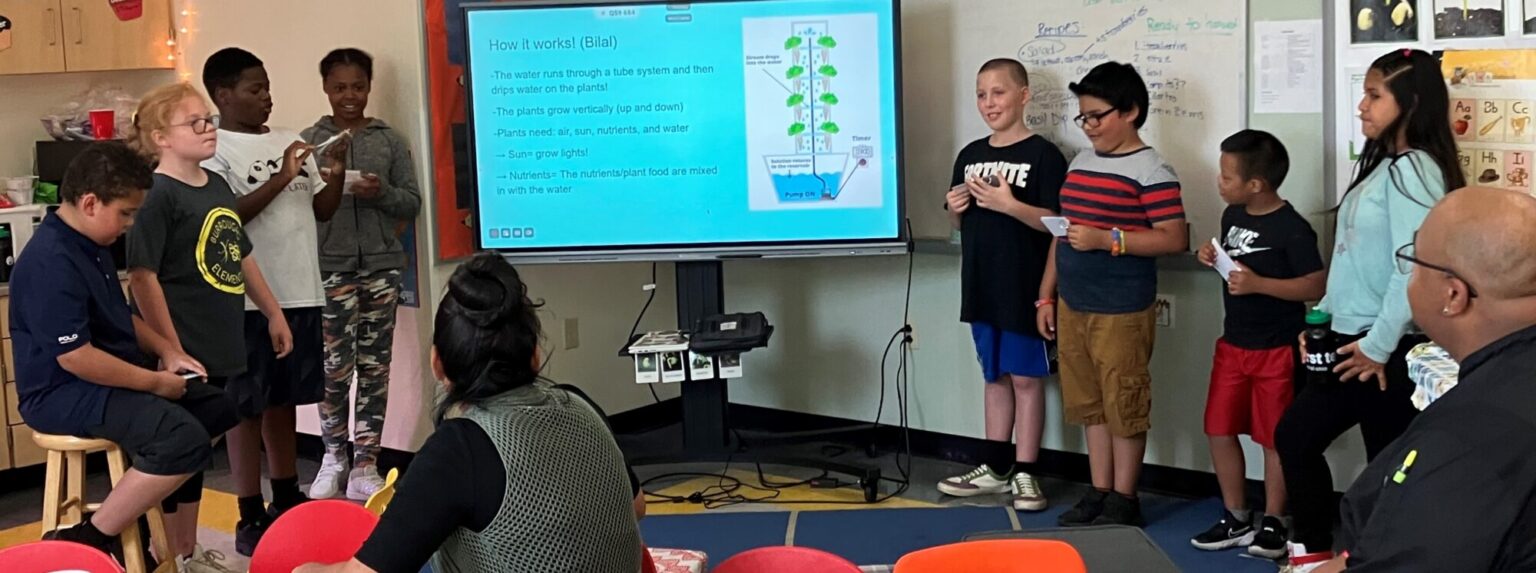from Kelly Gaier Evans, Director of the Ohio STEM Learning Network
 Grants can be a crucial source of funding to try something new. Thanks to the generous support of Battelle, the Ohio STEM Learning Network will fund a third round of grants to support STEM learning in classrooms across Ohio. Teachers or administrators working in public district schools, public charter schools, and public independent STEM schools can apply by September 5 for a $2,500-$5,000 grant to further STEM learning. Completing the grant application should take about 60 minutes.
Grants can be a crucial source of funding to try something new. Thanks to the generous support of Battelle, the Ohio STEM Learning Network will fund a third round of grants to support STEM learning in classrooms across Ohio. Teachers or administrators working in public district schools, public charter schools, and public independent STEM schools can apply by September 5 for a $2,500-$5,000 grant to further STEM learning. Completing the grant application should take about 60 minutes.
When I wrote about this opportunity last year, I explored common themes from successful grant applications. This year, I’m going to shift my focus to essential lessons learned when submitting any grant, including this year’s Ohio STEM Learning Network STEM Classroom Grant. Whether you’re a seasoned grant writer or a novice, these tips will help increase your chances of securing funding for your STEM education endeavors.
Applications open for OSLN STEM Classroom Grant Program
Tip #1: Read the RFP from beginning to end.
One of the most common reasons for grant applications being rejected is failure to follow the instructions outlined in the Request for Proposal (RFP). It’s essential to thoroughly read and understand the RFP from beginning to end. Take note of eligibility criteria, allowable expenses, and any specific requirements outlined.
Before diving into your proposal, ensure you have a clear understanding of what the funding can be used for and what it cannot. Adhering to the guidelines provided by the grant issuer will demonstrate your attention to detail and dedication to fulfilling the grant’s objectives.

Tip #2: Be intentional and purposeful.
When crafting your proposal, it’s vital to have a well-defined and focused approach. It is more important to clearly align to a single focus area rather than to cater to multiple focus areas with weak alignment. Your budget should also be carefully planned to support your project effectively. Use the narrative to be explicit with how the budget supports the project.
In describing your intended learning outcomes, if you focus on “Building a culture of STEM”, how will your learning outcomes reflect STEM habits and mindsets? If you focus on “STEM as an approach to teaching and learning”, does your application provide a strong explanation of the anticipated learning outcomes in the content areas this project focuses on? Finally, if your focus is “Success in STEM careers,” how do you measure project impact on student interests in identified STEM careers or pathways?
Tip #3: Engage all students, especially students underrepresented in STEM.
Apart from focusing on STEM education programming, consider how your project can reach students who are typically underrepresented in STEM fields.
In addition to fostering the creation of new, sustainable STEM education programming in classrooms by investing directly in our K-12 teachers and administrators, this grant program aims to increase the number of students participating in STEM education.
When considering your proposal, think about how to impact students that may not otherwise get the experience. For example, if you are teaching a small class that students choose as an elective, is there a way to collaborate with a core content area to expose students to your elective or pathway? This could be a good way to build exposure to things like Computer Science that are not a requirement for students.
Embrace creativity in your approach to engaging students. Consider cross-disciplinary lessons that combine Science Technology, Engineering, and Math with other subjects like Art, English, Social Studies, Drama, or Gym class. By doing so, you can provide students with a holistic understanding of how STEM intersects with real-world challenges.
Tip #4: Give it a try!
I know we have missed the chance to fund some truly great applications thanks to self-doubt or misconceptions about STEM. Don’t be discouraged! This grant is for teachers of all disciplines.
STEM education fosters critical thinking, problem-solving, and creativity, skills that are essential across all subjects. By integrating STEM elements into your classroom, you can empower students to address authentic problems within their communities. That integration can be even more powerful when the name of the class doesn’t include Science, Technology, Engineering or Math.
Submit by the deadline.
Submitting a successful application for a STEM Classroom Grant requires careful planning, a clear vision, and alignment with the grant issuer’s objectives. Remember to thoroughly read and adhere to the RFP guidelines, be intentional and purposeful in your approach, and strive to engage all students, especially those underrepresented in STEM.
By embracing creativity and collaboration, you can craft a compelling proposal that highlights the significance of your STEM initiative and increases your chances of securing the funding you need to make a positive impact on your students and your community. Don’t hesitate to write a proposal – you might just be one proposal away from transforming education and inspiring the next generation of innovators and problem solvers in your community.